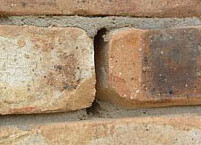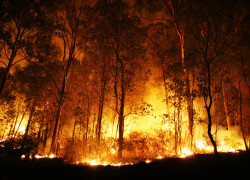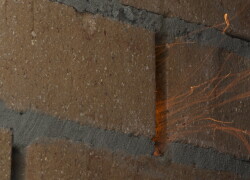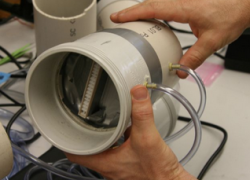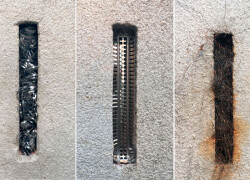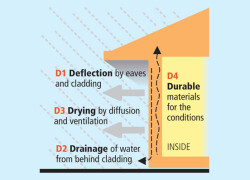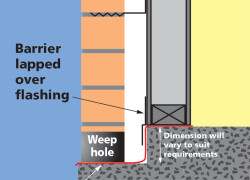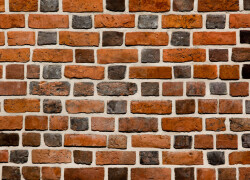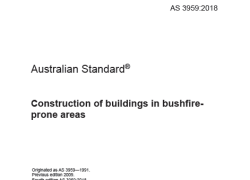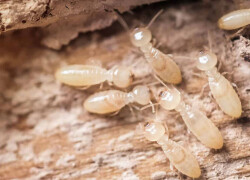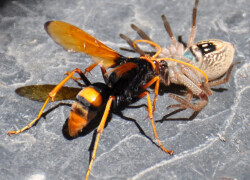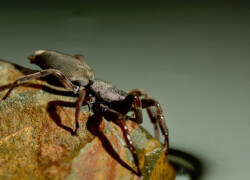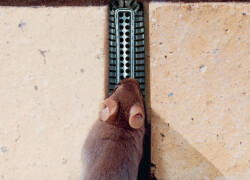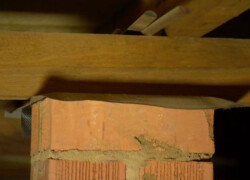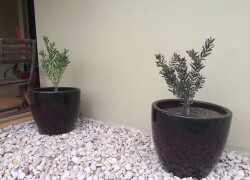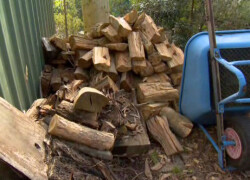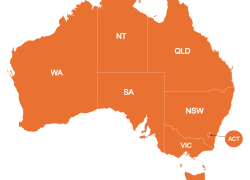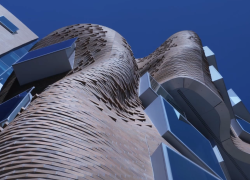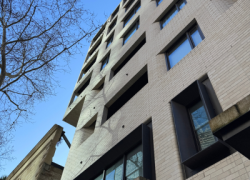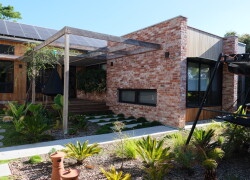Weepholes are essential for ventilation and drainage of brick walls, but create problems with mice, cockroaches, bees, wasps, termites and more. In bushfire prone areas they must be screened to meet AS3959:2018. We have weep hole covers and vents to solve these problems.
How to comply with weephole requirements of AS3959:2018 BAL-A12.5, BAL-A19, BAL-A29, BAL-A40 and BAL-FZ.
The Australian National Construction Code NCC (2022) and Australian Standards AS3959:2018 and AS1530.8.1:2018 are concerned with improving the quality of Australian buildings and the health and safety of their occupants.
Major bushfires such as the Canberra firestorm and Black Saturday fires have focused public attention on the protection of homes and lives during future bushfires.
Weepa commissioned new airflow research in 2013 to test a wider range of products and some new prototypes. Read the full report to see how the products performed.
All too often, we hear of homeowners pushing steel wool or pot scrubbers into weep holes to block them and keep pests out.We get it, and at first glance it looks like a clever, cost effective and innovative solution.
'Leaky Building Syndrome' describes when water penetrates the building envelope and is held between the interior and exterior skins. Fungal growth then literally eats away the wall materials.
Here at Weepa we receive many calls from home owners who are either worried about, or have been told that, the damp and moisture problems in their homes are caused by the entry of water through weepholes.
Mould, blistering paint and damp and cracking plaster. What is the cause, rising damp or Leaky building Syndrome? While rising damp was a big issue in older inner city houses it’s not common in modern housing.
Most high front guttering installed with spring clip systems in Australia does not comply with Australian building codes and Australian Standards. This roll formed guttering pushes water back into the cavity under certain conditions.
The original design of the High Performance Bushfire Weepa was the result of extensive testing undertaken at CSIRO Manufacturing & Infrastructure Technology, at Ryde in Sydney, NSW.
Extract from Food and Safety Endorsement Statement PE-490-WP-07b "HACCP Australia Pty Ltd endorses the installation of Weepa Products' weephole protectors as effective and food safe devices for the prevention of rodent
Bushfire Attack Levels in AS3959:2018 BAL - Low There is insufficient risk to warrant specific construction requirements. BAL - 12.5 Ember attack and radiant heat up to 12.5kW/m2. BAL - 19 Increasing levels of ember attack
In recent years several plastic weep hole products without metal mesh have achieved compliance with AS39659:2007 via testing in accordance with in AS1530.8.1(2007). Here at Weepa we have some serious concerns about this trend.
Even if you have regular professional termite inspections, knowing the signs of termite activity can help save your home! Here are our top 6 signs of termite activity every homeowner should know.
Having a bee or wasp nest in the walls of your home is surprisingly common. After all, the wall cavities of your home are dry, warm and protected from predators, so an ideal place for bees and wasps to build a nest.
You don’t have to be an arachnophobe to not want spiders around the home – redbacks, white-tails and black house spiders have nasty bites and to many, huntsman are downright scary.
Everyone wants a pest free home. There are a 3 key actions you can take to achieve this goal: make conditions around the home less attractive to pests, carry out preventative pest control treatments and eliminate potential pest entry points.
Termites are everywhere in Australia. CSIRO estimate that 80% of all homes are within 25 m of a termite nest. So, it’s important to have a termite management plan in place.
It’s been estimated that termites cause around $1 billion dollars of damage in Australia each year! With termite damage not covered by standard home insurance policies, it’s important that homeowners take all possible steps to prevent termites from entering their home.
Termites are pretty much everywhere in Australia – it has been estimated that 80% of all homes are within 25 m of a termite nest! So, whether you're aware of it or not, there are probably termites trying to get into your house right now!
The chances of your home coming under termite attack during its lifetime are as high as 1 in 3 in some areas of Australia. You may think it’s bad luck if your home comes under termite attack... it’s not.
Construction requirements in bushfire prone areas can be a complex topic. This article provides a guide to understanding bushfire prone areas and attack levels in your State or Territory.
Frank Gehry's Chau Chak Wing Building at the University of Technology, Sydney, stands as a testament to the unique way in which bricks can be used playfully and unconventionally. This project offered many challenges for all parties involved from building suppliers to engineers.
BlueCare Sunrise Beach Aged Care Home represents a significant advancement in aged care design. Located just south of Noosa on Queensland's Sunshine Coast, the project embraced key insights from the recent Royal Commission into aged care, focusing on home-like environments, nature integration, and community connection.
In Australia, springtime brings with it the natural phenomenon of bee swarming. As hives become overcrowded, the queen and thousands of worker bees set off in search of a new home. While tree hollows and rock crevices are ideal, cavity brick walls in homes - especially those with unprotected weep holes - can be just as inviting. One Brisbane homeowner discovered this the hard way.
18 Loftus Street at Quay Quarter Lanes blends heritage charm with modern sustainability. Designed by Silvester Fuller, the brick-clad apartments feature bespoke apertures for light and privacy, precision brickwork by Favetti, and Weepa formed weep holes for ventilation and pest protection-earning Silver at the 2022 Sydney Design Awards.
Residential construction in Australia demands smart solutions that balance climate resilience, energy efficiency, and aesthetic appeal. In Adelaide, homeowner Mitch made the bold decision to demolish a charming but run-down cottage and build a new home from the ground up. His goal was to honour the spirit of the original structure while embracing modern building principles that deliver long-term comfort, sustainability, and durability.
